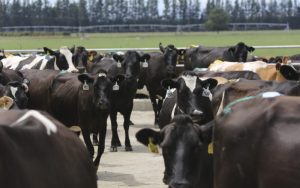
Growing a quality heifer will lead to increased conception rates, easier calving, longer time in the milking herd and higher production outputs, however getting the right nutrition into calves can be difficult.
Feeding challenges often include labour shortages, wasted feed from the elements, higher feed prices for feed in 25kg bags, lack of control over intake, bossy stock consuming more than they should, and when the calves grow out, they can start making the task risky to your health.
Advantage Feeders have been helping farmers around the world overcome these challenges for almost 15 years and have developed a model for the New Zealand dairy farmer.
The three-way feed restriction system controls the height, width, and depth of how much feed flows from the hopper, restricting the amount of feed that enters the feed access area and controls how much can be consumed by calves and heifers.
The animal soon learns how to lick in and out of the “feed access area”, getting only a tiny amount of feed with each lick. The three adjusters can be set for any ration but in the most restricted setting, stock receive about 0.33% of their bodyweight per day. This is about 350g/day for a 100kg calf or 1kg/day for a 300kg heifer.
Once feed control is achieved, many of the challenges of providing ideal nutrition to replacements is easily overcome. The practical benefits of Advantage Feeders newly released M1000HD only scratches the surface with the main benefit of the increased production being realised out of sight in the animal’s rumen.
Using the three-way restriction system supplements animals with small amounts, often. This ensures the pH of the rumen stays in a zone that allows pasture digesting microflora to work efficiently leading to a reduction in supplementation and reduced feed expenses.

























